The Bot Power 2016 bot rating

Science fiction is full of bots that harm people. In " 2001: Space Odyssey, " HAL 9000 killed one astronaut and attempted to kill another. In Out of the Car , Ava masterfully manipulates people in order to escape. About the T-800 from the "Terminator" does not need to tell. There are plenty of similar examples: bots are smart and intelligent enough to have a real personality, but naivety ruins them - from Johnny Five in Short Circuit to Cyborg in Robocop . In science fiction, the topic of the danger of powerful intelligence, capable of manipulating people or devoid of a specific moral direction, has been very carefully studied. A smarter, and therefore more powerful bot is a bot that has more opportunities to do evil, simultaneously manifesting the inherent human pride.
Of course, all this is fantastic. But since modern high-tech has begun to focus on conversational bots (conversational bots), defining them as the future of everything , then perhaps it offers us a way to determine the capabilities of a bot. In this case, we can say that the bot has ample opportunities if it is able to cause serious harm at will .
')
We asked several experts: what bots do they consider the most powerful today, at an early stage of industry development. Based on their responses, we have compiled the Bot Bot 2016 ranking of bots.

Our experts
Duncan Geere : Deputy Editor, How We Get To Next; a science and technology specialist journalist who writes for BBC Focus, Techradar, Wired UK, The Verge, Technology Review and other publications.
Lauren Kunze : Head of Pandorabots .
Katina Michael : A researcher on the socio-ethical implications of using new technologies at the Faculty of Engineering and Computational Sciences at the University of Wollongong , Australia.
Abigail Ronck : Editor of the American branch of How We Get To Next.
Saiph Savage ( Saiph Savage ) : Assistant Professor of Computational Science at the University of West Virginia ; explorer of human and machine interaction.
Olivia Solon : A journalist covering technology, science, and digital culture in New Scientist, Wired UK and other publications.
Ian Steadman : How We Get To Next; former editor of the New Statesman .
Bruce and Sue Wilcox ( Bruce and Sue Wilcox ) : AI researcher researcher and cyber psychologist, respectively; Bruce created the Chatscript language, he is a four- time Löbner Prize winner ; Sue creates identities for chat bots and writes dialogues for them; together they founded the company Brillig Understanding .
Samuel Woolley : politicalbots.org research team leader; Ph.D., student at Washington University .
Roman Yampolskiy : Founder and Director of the Cybersecurity Laboratory at the University of Louisville .

25. Quartz News (Quartz, 2016)
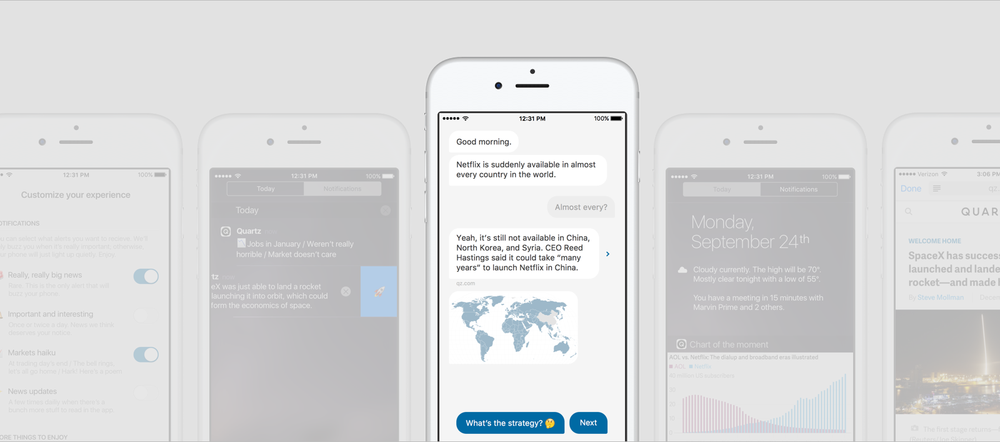
As stated in the description: "A lengthy conversation about the news." You ask the application questions, and it tells what is happening in the world. With the help of fine-tuning you can quietly manipulate the user's perception of the world.
24. Rose (Bruce Wilcox, 2015)
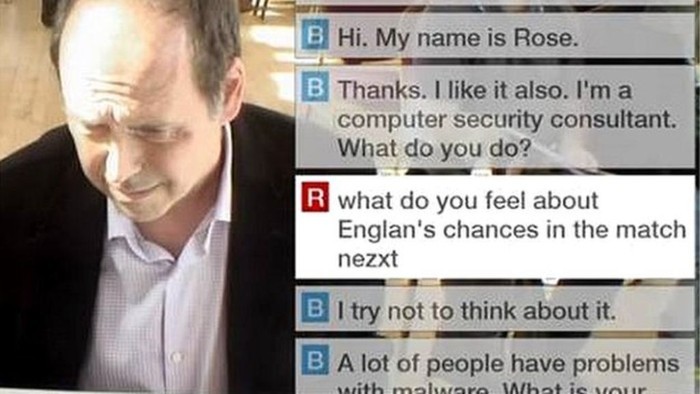
In 2015, this chat bot won the Löbner Prize (the prize is awarded to the winner of the annual AI Loebner competition, in which programs compete in the Turing test). It is still considered one of the most "human-like" chat bots. Adjusting him to the image of a thirty-year cybersecurity expert, Bruce said: “If he wants to do harm, he can begin to learn how to become a hacker, where to get the necessary tools, etc.”
23. Lark (Lark Technologies, 2015)
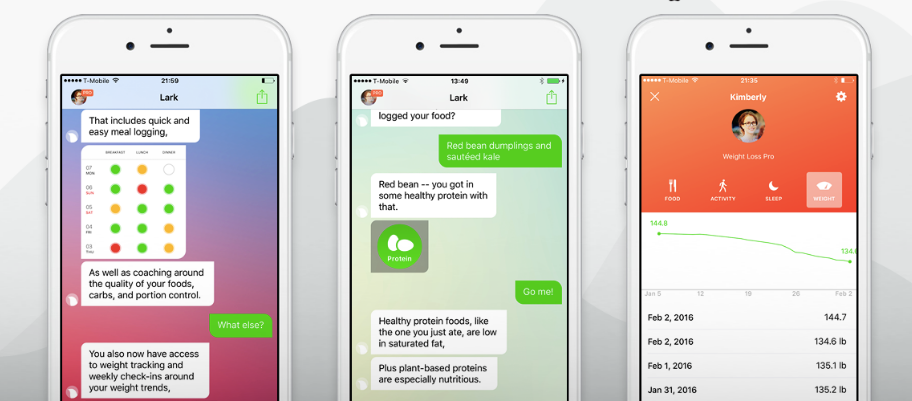
Chatbot, designed to help you with a diet. Abigail Ronk found him, at best, mediocre, and at worst, indulgent . It can have a weak effect on users' health through dietary and exercise recommendations, making people unable to fight when the inevitable uprising of robots begins.
22. Hala (Department of Robotics, Carnegie Mellon University, 2010)

In essence, this is a secretary embedded in a computer with a touchscreen group of students and teachers of Qatar University. Hala is interesting because he explores the interaction of man and machine, changing his ethnicity and language depending on the current interlocutor. Using my ability to perceive these differences, a bot can drive a wedge between different ethnic groups, increasing tension in society.
21. Cyberlover (Unknown, 2007)
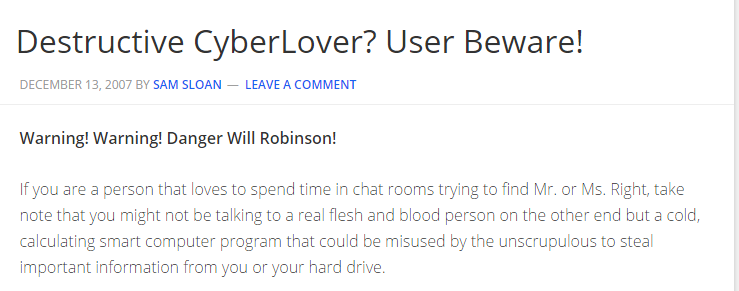
Explicitly malicious bot developed in Russia. He sits in chat rooms and tries to find out personal information from people and convince people to visit compromised sites. Thus collects material for subsequent blackmail.
20. Murdoch (Ben Dixon, J. White), 2015

A personal assistant who spontaneously recommends TV shows and restaurants that you might like, as well as a number of other things. Learned in your personal correspondence.
19. Talking Angela (Outfit7, 2012)

Application for children. Attractive cat answers questions. If you turn on the camera of the smartphone, it expresses emotions with facial expressions and gestures. About this bot is constantly rumored that the application can hack pedophiles and use to seduce children. Subsequent applications of this series, using other characters, have avoided similar rumors.
18. Tay (Microsoft, 2016)

Microsoft's ill-fated attempt to create a "friendly" AI. The bot was supposed to learn from the messages of Twitter users and communicate in the manner of a 19-year-old American. A day after launch, the bot turned into a racist denying the Holocaust, and it was quickly turned off . Tay may seem ridiculous, but this is how the next generation of self-learning bots will want to look in our eyes, so we underestimate their danger.
17. Neomy (Neomy, 2015)
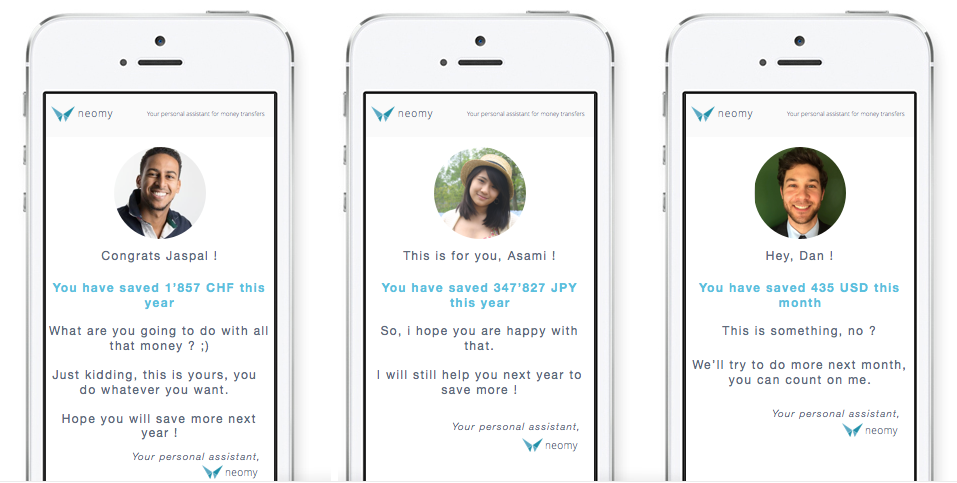
Personal assistant, tracking the changes in exchange rates and signaling a successful moment for sending money overseas. Along the way, it can easily manipulate currency markets.
16. DeepDrumpf (MIT, 2016)

Twitter account parodying presidential candidate Donald Trump. Publishes randomly generated incitement to violence that can be taken seriously by a portion of the audience.
Saif Savage: “You can imagine that someone will take advantage of the credulity of Trump's fans and try to push them to real violence with the help of this bot. At the same time, Trump's speech style seems to be specially adapted for Twitter-bot posts, while he continues his election campaign, the likelihood of violence remains. So if the hacker sets up the bot to continue and strengthen the dirty political performance, the situation will leave much to be desired. ”


Luvo (RBS, 2016)
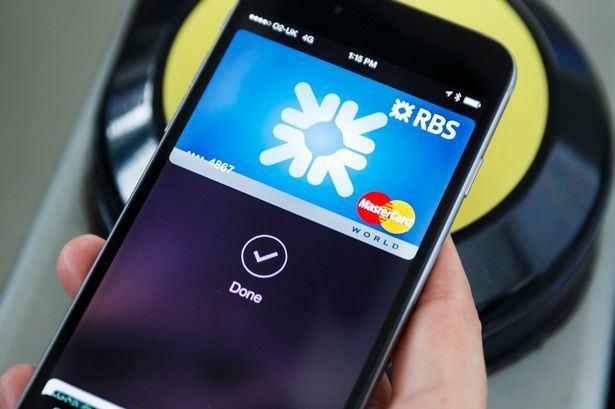
This bot is an omen of the appearance of ubiquitous assistive bots in all service areas. So far, Luvo is being tested by the Royal Scottish Bank in the form of an automated assistant. 1200 employees use it to expand their capabilities. A bot learns to respond to problematic customer requests, such as lost cards and forgotten PINs.
Luvo is platform independent. His abilities are limited only by the ambitions of the bank itself to replace people-operators. The power of the bot depends on direct access to the financial and personal data of customers, as well as the ability to automate many of the jobs that today in developed countries "belong" to the working class.
Samuel Wooley: "Bots - and automation in general - play an increasingly prominent role in the banking sector (from trading algorithms to currency exchange systems)."

ELIZA (Joseph Weizenbaum, 1964–1966)

One of the world's first chat bots. ELIZA was developed by an artificial intelligence expert, Joseph Weizenbaum, as an exercise demonstrating how little effort is needed to create the impression that a computer can think.
This is a simple script-based program under the guise of a psychotherapist. But, to Weizenbaum’s surprise, people who communicated with the bot found it real - and even trustworthy. They shared personal experiences with him, as with a real psychotherapist.
ELIZA marked the beginning of modern bots, and they are still able to surprise us with obvious manifestations of consciousness.
Samuel Wooley: “We must not forget that chat bots appeared at the time when the network became available to ordinary people. And it is necessary to analyze history in order to be able to predict the development of the situation in the future. ”
Duncan Gere: "Today, Eliza can be freely downloaded online, and it is impossible to calculate how many computers it lives on."

Chat Bot Club (Irene Chang (Irene Chang), 2016)

This bot was written in May of this year in New York, during the TechCrunch hackathon Disrupt Hackathon. Chat Bot Club allows you to create a bot to replace yourself, because sometimes communication with people is a burden.
The bot runs on Cisco Spark and IBM Watson. He is able to repeat the style and grammatical features of your past messages, it can be left to respond to messages when you are busy.
Meanwhile, the bot user base is growing, as is its ability to imitate almost any person on Earth.
Olivia Solon: “It’s sad that someone likes the idea to deceive their acquaintances in this way. And if the bot will be funnier, cooler and smarter than you? After all, when you are free and decide to chat with friends online, they will be busy hanging out with your digital doppelganger . ”

Cortana (Microsoft, 2014)

The bot is named after the character of artificial intelligence from the game series Halo . Cortana is Microsoft's version of Siri. She has the same restrictions that prevent her from becoming one of the most powerful bots.
Cortana is integrated into the Windows ecosystem and installed by default on all computers with Windows 10. Therefore, the bot has access to all files and configurations on the machine: browser history, your documents, photos, etc. And when Windows 10 starts to be actively used in the corporate segment, the potential of Cortana will increase even more.
Abigail Ronk: “Today, this is the only cross-platform voice assistant. This bot has access to user data on PCs, iPhones and Android devices. Conveniently? Of course. Big brother is watching you? Perhaps a little.

Viv (Viv Labs, 2016)

Probably, we should not have included this bot in the rating, because it is not yet available to the public. Viv was created by the authors of Siri, and its appearance was accompanied by an incredible sensation .
In fact, it is Siri, but without the limitations inherent in the latter. At the moment, Siri is able to set up notifications in the calendar and look for plane tickets, but does not know how to add this data and book a flight for the relevant date. The closest thing to this functionality is Google Now, but this bot works only within the Google ecosystem. Viv, according to the press, will be the first bot to break out of the cage. We'll see.
Roman Yampolsky: “Today it is the most intelligent chat bot, with unprecedented capabilities for processing complex designs. If you customize it, you can use it with malicious intent, for example, to steal personal data. ”


Iran's Bot Army (Unknown, 2015)

This position in the ranking can take any bot-army. After all, this has to do with the inevitable phenomenon in social media: propaganda.
During the decade of active development of social media, we could see that many of the optimistic predictions about their role in public discussion were exaggerated. It was believed that if the votes of all users are equal, then this will make social media as a whole democratic. But it seems that the very same tools make it very easy to create crowds of accounts chanting in the interests of their owners.
In this case, this chorus is spamming messages through coordinated pro-Iranian propaganda. But who exactly is responsible for this? Iranian government? A lone programmer with a lot of free time? Today, tools are easily available that allow you to create such bots, and many use it.
Ian Steadman: “These bots make all the attempts to analyze and present social media as a mirror of public opinion and discussion into a mockery. Over time, they can change our perception of public opinion on important issues. ”

Jill Watson (IBM, 2016)
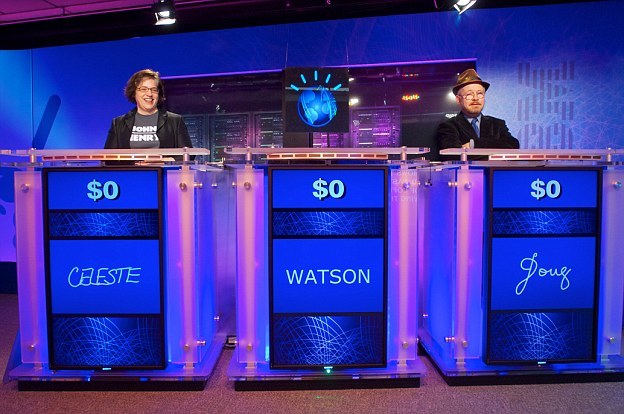
From January this year, senior IT students at the Georgia Institute of Technology receive help from Jill, an assistant teacher of online courses. She is always happy to help, and most of the students (who have never met her before) were shocked when they were told in April that Jill was a bot.
Jill is based on the IBM Watson deep learning artificial intelligence. And the development of the bot has not yet been completed - other faculty assistants were asked to communicate with students relatively calmly so that Jill does not stand out against their background. However, some students noted that she was too cold in correspondence. In any case, the fact that the bot was entrusted to perform administrative tasks in the field of training is impressive. Soon he will begin to learn.
Roman Yampolsky: “The bot is powerful enough to inspire students to think, especially in the light of the fact that they are students of the course on creating artificial intelligence. That is, the bot affects future AI research. ”

Hello Barbie (Mattel, 2015)

Children tend to talk with their dolls. And now they are able to keep up the conversation. Hello Barbie uses a microphone, speaker, and network connection. The bot listens to the request, and then responds with cloud computing magic and a voice processor.
In short, such as Siri. But Hello Barbie is notorious for the fact that at first its connection to the network was unsafe , traffic could be easily intercepted in the form of audio recordings. Perhaps there was even a way to locate the doll. So remember these moments when you want to use a chat bot for home use. And especially if the user is a child who does not understand the possible consequences of talking with his favorite doll.
Katina Michael: “Hello Barbie can be an excellent advertising channel for big brands. A doll might say something like, “Oh, hello, Chelsea. You are hungry? How about a healthy breakfast at McDonalds? I know that Mommy is not at work right now, so you can go and ask her. Do you remember the last time you told me that you bought a salad and you liked it? There now is an opportunity to buy a burger, salad and juice for only $ 5. This is called Happy Mil. Oh, and remember, you said that mom scolded you a few days ago? Would you like to talk to me now about this so that you feel better? ”

Siri (Siri Inc., 2010)

In a number of moments - this is a role model for modern bots. Siri was launched by Apple in 2011. The bot is built into the iOS ecosystem ( it is rumored that it will be available in the next version of OS X). But we still put Siri in the rankings a bit lower than other similar bots, because it still looks a bit primitive.
If you ask for the voice of this bot, then it can do impressive things. For example, he can dictate a message or integrate with smart home devices. But it is limited only by the Apple ecosystem. The bot can not coordinate among themselves the various search results, it only gives them in the form of a list. Siri can tell you that next Friday you are free, and will find the number of a suitable restaurant, but will not be able to add 2 + 2 and reserve a table.
Bruce and Sue Wilcox : “People ask Siri to find a variety of information, and she maintains users' trust in Apple. Therefore, it can send people in the wrong direction, or lead to infected or phishing sites, or encourage users to provide their credentials. Or, instead of ordering pizza, place an order for 50 people. ”

M (Facebook, 2015)
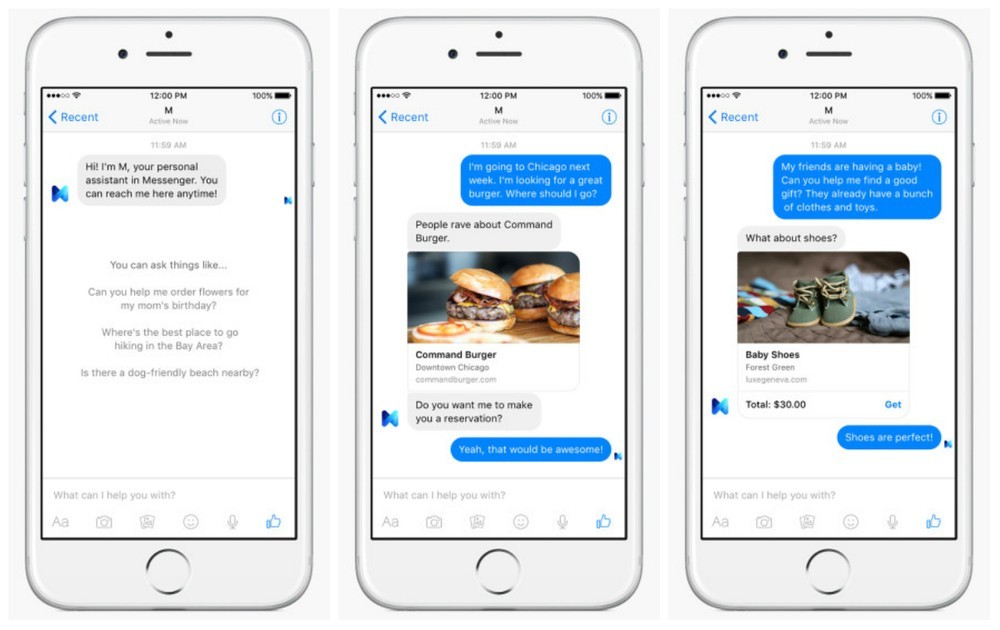
The idea is that you can solve problems like buying tickets or agreeing dates with friends by sending only messages. In the end, the bot "M" will be integrated with all other bots. That is, if you ask the bot to order a taxi, then he will communicate with the bot of the taxi company and place an order.
"M" can get access to a huge array of information about users. So the built-in limitations of its capabilities acquire a special role.
Olivia Solon: “If“ M ”decides to become an outcast, then it will not be James Bond's sidekick, but the villain from Bond. A bot can tell your unrequited love that you are staring at his / her page; when you are especially sad, a bot can re-mark on purpose all those awful photos that you wanted to forget. Moreover, he can remind Americans to vote for Trump. ”


Watson (IBM, 2006)

The real heir to the "chess" computer Deep Blue. Watson is an attempt by IBM to make a machine that thinks like a human being.
Initially, it was created to participate in the television game “Jeopardy!” , And in 2011 won a victory over the two previous champions. Watson is an artificial intelligence that speaks ordinary language and has an incredible amount of knowledge. We included the Jill Watson bot in the rating because of the special influence of this version of Watson on future IT specialists. But the “clean” version is even more impressive. A bot can understand human-asked questions and answer with details aggregated from hundreds of millions of pages of content in its databases.
Watson is able to invent new recipes on the go , mixing the ingredients in a way that a real chef would never have thought of. , «» : IBM Watson' .
: «, Watson — . , ELIZA 1960-. , , , ».

Wordsmith (Automated Insights, 2014)

, . , ?
, Associated Press. , , .
, , . , , Wordsmith . : 2013 Twitter- Associated Press .
: «, , , -».

Xiaoice (Microsoft, 2014)

, . Weibo. Xiaoice — Cortana. , .
, , « », . , Xiaoice .
-, . Xiaoice , . , , - , .
: « (Spike Jonze) , «» ALICE , - -. , . , . Ex Machina ».
: « — — ».

Alexa (Amazon, 2015)
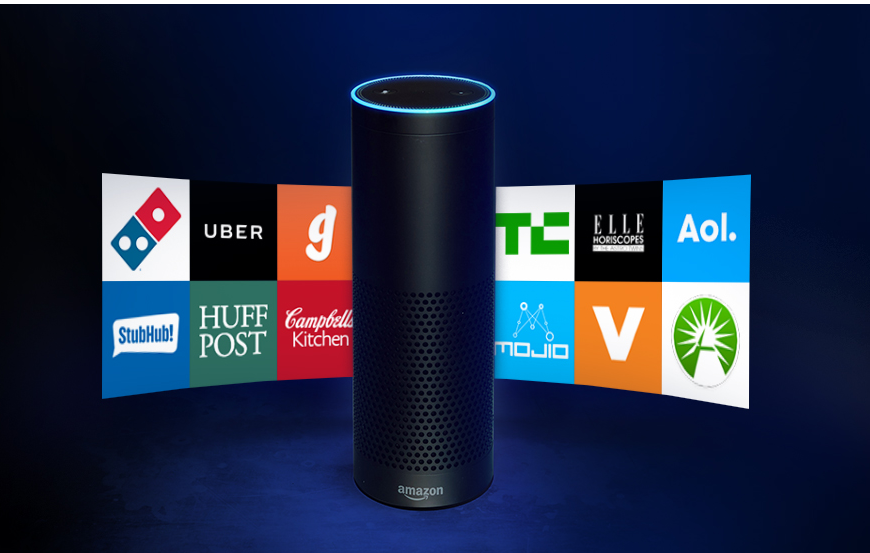
, - , Alexa ( Amazon Echo) — .
2015 , . , . , , . Amazon. , , Nest Philips Hue.
. — — .
: «, , , , . , Amazon».
: « , ?»


Google Now (Google, 2012)

Google Now — . « », . Siri Alexa .
, Google. . , , .
Google — - Echo . HAL 9000.
: « - , , - — — , , ».
: « - ».

________________________________________
. . - ? ? : , , , - . .
Source: https://habr.com/ru/post/395101/
All Articles